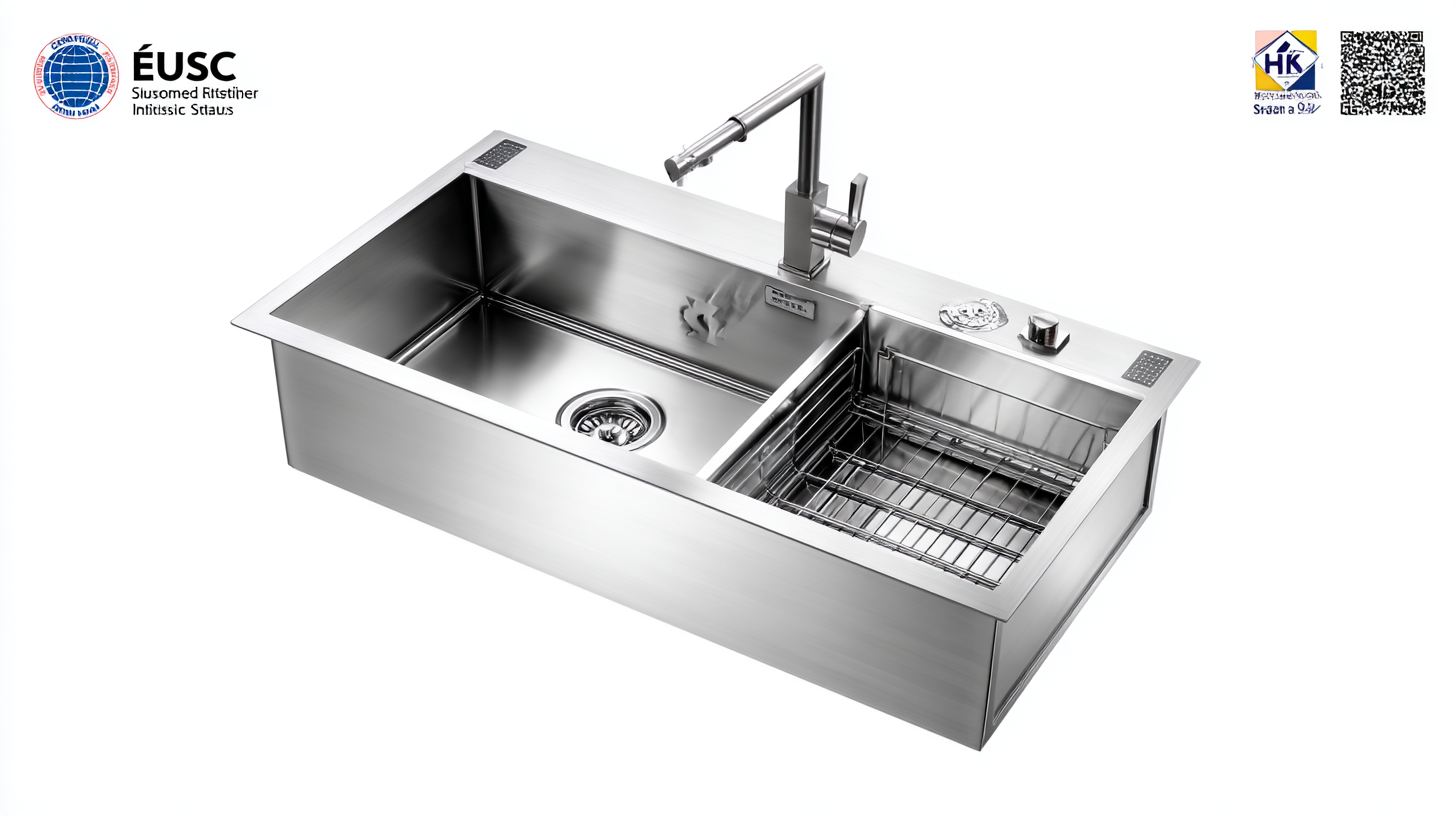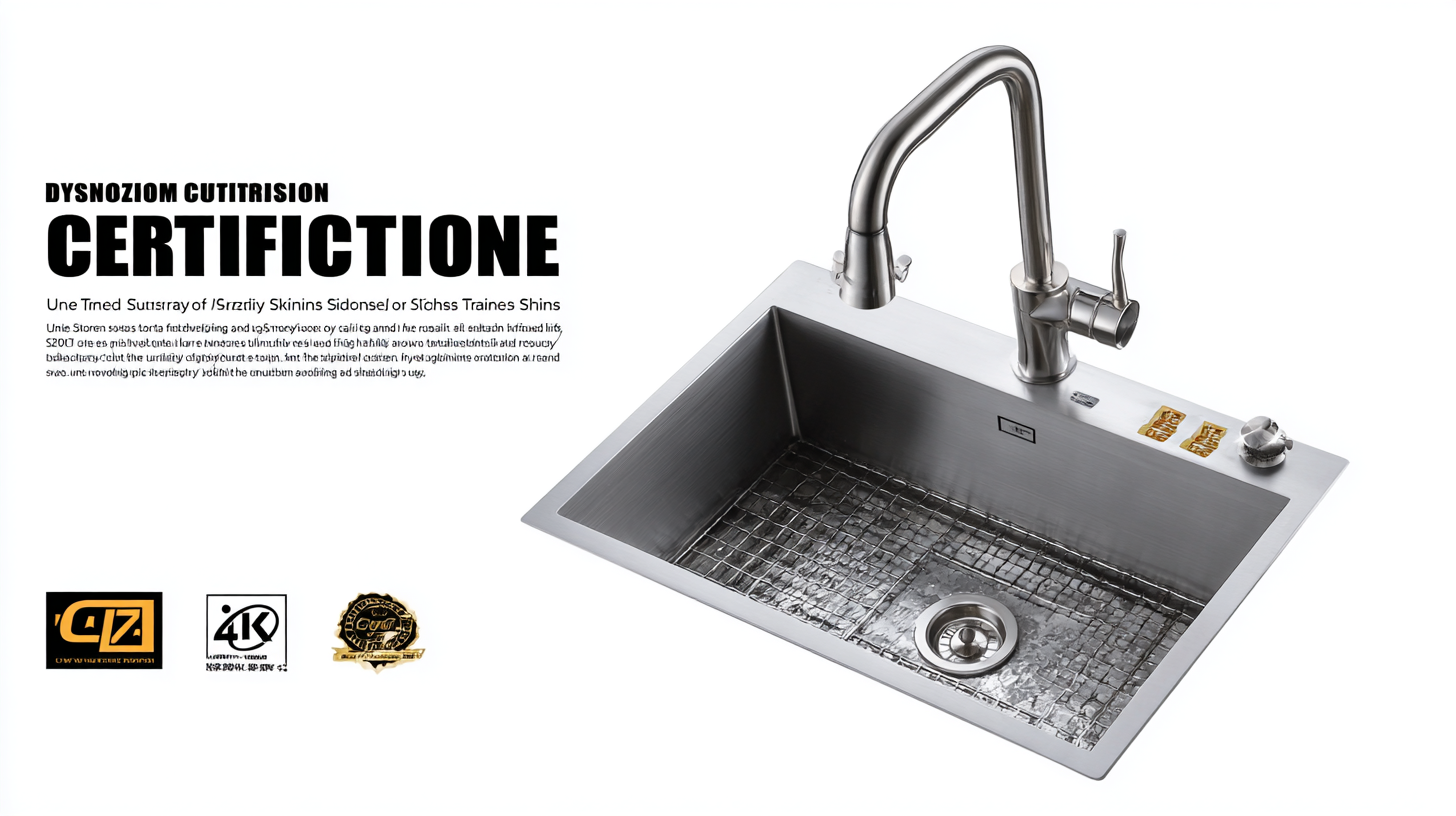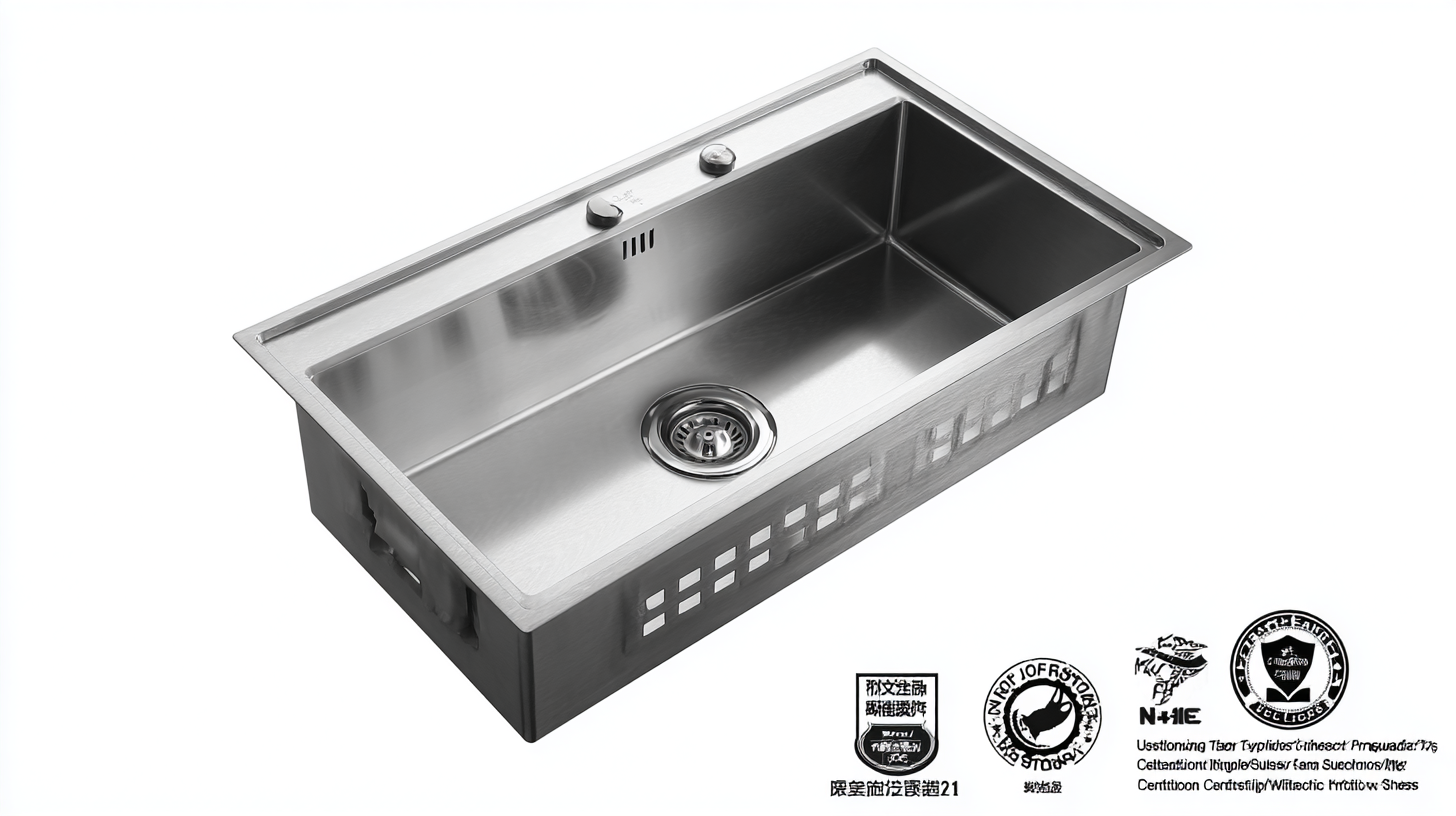In 2023, the global market for customization stainless steel sinks is experiencing unprecedented growth, driven by a surge in consumer preference for personalized home improvements and enhancements. According to a report by Market Research Future, the stainless steel sink market is projected to reach USD 4.5 billion by 2026, with a compound annual growth rate (CAGR) of 4.8% from 2021 to 2026. This rise is not only reflective of the material's durability and aesthetic appeal but also the increasing demand for versatile and customized solutions that fit unique kitchen spaces. Additionally, the integration of advanced manufacturing technologies and certification standards plays a crucial role in ensuring quality and sustainability, thereby further unlocking global trade opportunities. As manufacturers strive to meet these evolving consumer demands, understanding the certification landscape for customization stainless steel sinks becomes essential for stakeholders looking to navigate this dynamic industry.

In the evolving landscape of global trade, industry certification has emerged as a pivotal factor for manufacturers of customized stainless steel sinks. According to a recent report by the International Stainless Steel Forum (ISSF), the global stainless steel production reached 50 million metric tons in 2022, indicating a robust demand that manufacturers cannot afford to overlook. Certification not only ensures compliance with international quality standards but also enhances customer trust. For instance, sinks that are certified to ISO 9001 often experience a 20% increase in sales compared to non-certified products, as customers prioritize quality assurance in their purchasing decisions.
Moreover, the benefits of industry certification extend beyond just consumer confidence. A study by the American Institute of Steel Construction (AISC) found that certified manufacturers reduced their operational costs by an average of 15% through improved processes and materials management. This operational efficiency allows manufacturers to offer more competitive pricing on customized products, further unlocking their potential in the global market. As the customization trend continues to rise, especially with homeowners seeking personalized designs and features, industry certification represents not just a mark of quality, but a strategic advantage that can significantly impact market share and profitability.
As we delve into the key trends shaping the global trade landscape for stainless steel products in 2023, a notable increase in demand across various sectors is evident. The global stainless steel market is projected to reach approximately $150 billion by 2025, with a robust compound annual growth rate of 4.6% anticipated through 2033. This growth is driven largely by industries such as automotive, construction, and consumer goods, where stainless steel is favored for its durability and aesthetic appeal.
In terms of raw materials, the ferrochrome market is also experiencing noteworthy shifts, with high-carbon ferrochrome dominating the segment due to its primary role in stainless steel production. The market for ferrochrome is expanding, correlating with the increasing production of stainless steel, especially in regions like Egypt, which has seen its export volumes grow steadily, further establishing its presence in the global stainless steel scene. Countries like Thailand are witnessing a rising import of stainless steel billets as domestic demand surges, underscoring a significant trend in regional trade dynamics that supports the sustainable growth of the stainless steel market.

When selecting the right customization options for stainless steel sinks, it's essential to consider factors such as gauge thickness, finish, and size. According to the latest industry report by Freedonia Group, the demand for stainless steel sinks is projected to grow by 3.8% annually through 2026. This growth underscores the need for homeowners and designers to choose options that not only enhance aesthetic appeal but also offer durability and functionality. A sink with an 18-gauge thickness, for instance, provides a balance of weight and strength, ensuring longevity in high-use areas.

Furthermore, the finish of the sink plays a pivotal role in both maintenance and appearance. A satin finish is favored for its resistance to scratches and ease of cleaning, as highlighted in the 2023 Kitchen and Bath Market Research report. Additionally, size customization is a critical aspect, as consumers are increasingly opting for ergonomic designs that suit both modern kitchens and their specific culinary needs. With an expansive array of customization options available, understanding these factors can significantly impact your decision-making process, leading to a successful kitchen renovation.
As global trade continues to expand, the stainless steel industry faces increasing demands for compliance with various certification standards. Navigating these compliance and certification processes is crucial for manufacturers aiming to enter or enhance their position in international markets. A comprehensive understanding of the industry standards not only ensures product quality and safety but also significantly impacts the competitiveness of businesses in a crowded marketplace.
In 2023, industry certification for customization stainless steel sinks has become more vital than ever. Manufacturers must familiarize themselves with regulations such as ISO certifications and local compliance requirements to meet stringent quality benchmarks. This knowledge empowers them to effectively communicate their product's safety and reliability to customers and stakeholders.
With proper certification, custom stainless steel sink manufacturers can unlock new avenues for growth, fostering trust and loyalty among consumers and establishing a strong global presence.
The stainless steel sink industry is on the brink of transformation, thanks to future innovations in design and customization techniques. As homeowners and designers seek more personalized solutions, manufacturers are stepping up with advanced technology that caters to unique preferences and needs. From customizable shapes and sizes to finishes that complement a variety of kitchen aesthetics, the opportunities for creative expression in sink design are virtually limitless.
Emerging trends such as 3D printing and digital fabrication are reshaping the landscape of stainless steel sink production. These methods not only allow for intricate designs but also enable swift adjustments to meet customer specifications. With such customization capabilities, consumers can create sinks that perfectly fit their spaces and styles, enhancing both functionality and visual appeal. As the market evolves, we can expect even more tailored solutions that redefine how we perceive and utilize one of the most essential components of our kitchens.
| Feature | Description | Customization Options | Innovation Techniques |
|---|---|---|---|
| Material Quality | High-grade stainless steel with corrosion resistance. | Variety of finishes, including brushed, polished, and matte. | Advanced welding techniques for seamless designs. |
| Size Variability | Customizable sizes to fit any kitchen layout. | Choice of single or double bowl configurations. | Utilization of 3D modeling for precision. |
| Edge Design | Multiple edge styles to enhance aesthetic appeal. | Options for curved, square, or beveled edges. | Laser cutting technology for unique shapes. |
| Sustainability | Environmentally friendly materials and practices. | Recycled materials usage options available. | Adoption of eco-efficient production techniques. |
| Accessory Integration | Additional features such as built-in drain boards or cutting boards. | Options for integrated sinks and extras. | Smart sink designs with integrated technology. |
